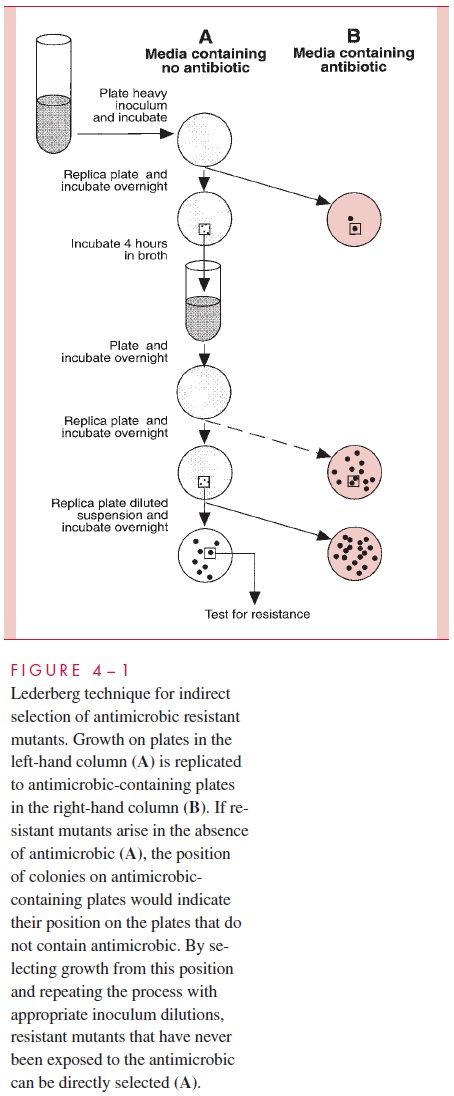Chapter: Medical Microbiology: An Introduction to Infectious Diseases: Bacterial Genetics
Bacterial Variation and Inheritance - Bacterial Genetics
BACTERIAL VARIATION AND INHERITANCE
It was rather difficult to establish that many of the same rules of heredity apply to bacteria as to plants and animals. This may seem strange, because the most spectacular advances in molecular genetics have been achieved almost exclusively through work onEscherichia coli and its viruses. However, during the 1940s and early 1950s, serious experimental efforts were still being directed toward determining whether mutations in bacteria were random or specifically directed by the environment.
The difficulty of establishing the basis of heredity in bacteria grew out of their inher-ent properties and their manner of growth. First, because bacteria are haploid, the conse-quences of a mutation, even a recessive one, are immediately evident in the mutant cell. Because the generation time of bacteria is short, it does not take many hours for a mutant cell that has arisen by chance to become the dominant cell type in a culture under appro-priate selective conditions. This can lead to the false conclusion that the environment has directed a genetic change. Second, as was noted, bacteria, to a far greater ex-tent than animals and plants, respond to change in their chemical and physical environ-ment by altering their pattern of gene function, thereby taking on previously unexpressed properties. For example, E. coli cells make the enzymes for lactose metabolism only when grown with this sugar as carbon source. Superficially this might suggest that lactose changes the cell’s genotype (its complement of genes), when instead it is only the pheno-type (the characteristics actually displayed by the cell) that has been changed by the envi-ronment. Finally, even when rather exceptional technical measures are taken to ensure a pure culture, contamination can occasionally occur. With cultures containing more than one bacterial species, different conditions of growth can cause one or another species to predominate (by, for example, a million to one ratio), suggesting to the unwary observer that the characteristics of “the” bacterium under study are very unstable and dependent on the environment.
Progress in bacterial genetics was rapid once it was recognized that mutation and se-lection can quickly change the makeup of a growing population and that bacterial cells inherit genes that may or may not be expressed depending on the environment. Even so, it was not until the discovery in the 1980s of transposable genetic elements and insertion sequences that certain examples of high-frequency variation, the so-called phase transition, could be satisfactorily explained within the framework of classic genetic principles.
Several experiments were particularly important in establishing that mutations occur in nature as random events and are not guided by the environment. The most convincing introduced the technique of replica plating and was used to show how a population of cells totally resistant to an antimicrobic could be isolated from an initially sensitive popu-lation without ever exposing them to the toxic agent (Fig 4 – 1). This clarified the mecha-nism of an important clinical problem.

Related Topics